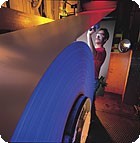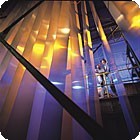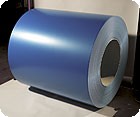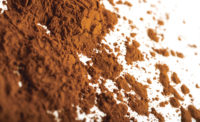
An increasing number of manufacturers are making the switch to prepainted metal because of its aesthetic, cost, performance and environmental benefits. As the use of prepainted metal grows, the demand for another innovation, antimicrobial-coated metal, is also on the rise.
Indoor Air Quality
In recent years, the public has become increasingly aware of biological contamination in the home, public buildings and the workplace. One of the most pressing concerns involves indoor air quality (IAQ). Building owners and operators need to protect against the health and financial threats posed by environmental contaminants such as bacteria, mold, mildew and other fungi – all frequent contributors to ‘sick building syndrome’. At least 50% of IAQ problems have been attributed to air handling and ventilation systems. As such, facility management in hospitals, and other commercial facilities, has traditionally attacked the problem by using disinfectants and antimicrobial coatings on the interiors of air handling systems.

A Better Way
The application of antimicrobial coatings through the coil coating process allows manufacturers to provide health benefits in the most efficient and effective manner. When the coating is applied using the coil coating process, a manufacturer can add a competitive advantage to its products without adding a step in the manufacturing process. And the antimicrobial benefits will last indefinitely.With coil coating, the cleaning, treating and anti-microbial coating is applied off site at a coil coating facility and delivered to the manufacturer pre-coated and ready to use. All of these steps are accomplished in one continuous process when the metal is flat, before it is cut and formed, enabling every inch of the surface to be cleaned and treated. In this very efficient process, a coil of metal up to 72 inches wide and moving up to 700 feet per minute is unwound, cleaned, chemically treated, oven cured and then rewound for shipment. The entire process is taken out of the hands of the manufacturer, including all the costs and hassles that go with it.
With respect to antimicrobial coating, the coil coating process offers more protection than other means of application because the antimicrobial coating is applied to the inaccessible areas, such as the interiors of HVAC ductwork, hemmed edges and tubes. Additionally, the primer and paint, either of which could contain the antimicrobial additive, are tightly bonded to the metal and are often applied to both sides of the metal.
A variety of antimicrobial coatings, both clear and pigmented, are available, depending on your performance requirements, application, operating parameters and substrate. One should work with the coating provider to find the best coating to suit your needs. Some antimicrobial coatings include metal pigment to improve heat exchange for HVAC applications. Others are designed specifically for medical and food equipment, and some include anti-fingerprint and other textures that will provide products with a competitive advantage. Some coating suppliers will even create a custom coating exclusively for your products.

Value-Added Benefit
All around the world, companies are discovering the value-added benefits of antimicrobial product protection, which delivers a valuable point of differentiation that consumers are demanding. Products coated with antimicrobial agents are becoming more attractive for use in office buildings, doctor’s offices, hotels, schools, restaurants, food preparation areas, cafeterias, appliances and other applications. And the most effective way to provide the advantages of antimicrobial coatings is through the coil coating process.
Summary
The benefits of coil-coated metals are nearly endless. In addition to offering a healthier environment with antimicrobial coatings, prepainted metal also increases productivity during the manufacturing process, and is environmentally friendly.For more information, visit www.coilcoatinginstitute.org or call the NCCA at 216/241.7333.


Report Abusive Comment